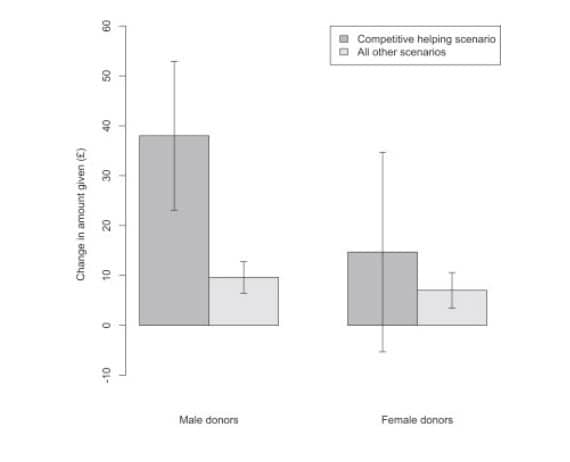[Case Study] Increase charitable giving using the theory of competitive helping

In the world of philanthropy and charitable giving, organisations constantly seek ways to maximise donation values and increase their impact.
The traditional approach to soliciting donations typically revolves around emotional appeals, heartwarming case studies, and showcasing the urgent needs of those being helped. However, recent research has shed light on an innovative concept that can significantly boost donation values: the theory of competitive helping.
This theory, supported by a fascinating study published in Current Biology, suggests that people are more likely to donate higher amounts when presented with a competitive element. We will delve into the key findings of the study and explore practical ways charities can leverage the theory of competitive helping to elevate their fundraising efforts.
Understanding the Theory of Competitive Helping
The theory of competitive helping centers around the idea that people are driven by their inherent need for social status and recognition.
When provided with an opportunity to demonstrate their generosity publicly and competitively, individuals may be more inclined to donate larger sums.
The sense of accomplishment and acknowledgment that comes from outperforming others in a giving context contributes to their willingness to donate at higher levels.
The Study
The study, conducted by researchers at prominent institutions, sought to investigate the impact of competitive helping in the context of online giving. They used data from a large, UK-based, online fundraising platform to test a key prediction of the competitive helping hypothesis: males respond competitively to the generosity bids of other males in the presence of attractive females.
In the experiment, participants were given the option to donate. However, they were also informed about the average donation amount made by other participants. The profile information and donation contributions of all donors were visible in chronological order so that new donors could see who had donated before them and how much.
- Male donors were shown an attractive female fundraiser and a large donation by another male donor.
- Female donors were shown an attractive male fundraiser and a large donation by another female donor.
This approach created the atmosphere of a competition in which donors essentially competed by responding to how much others have given. Showing existing donations on a page seemed to act as an anchor for current donors, indicating that donors do pay attention to other donors’ actions in this setting
Results
This shows that males are likely to donate more money when shown both a picture of an attractive female in conjunction with contribution amounts of male donors. The opposite scenario didn’t really work on females.
If you’re looking to increase donations, competitive helping is a proven theory to explore incorporating into your donation page, but will only really work on males!
All our resources are FREE
Want to stay updated?
Get instant updates on our latest news and resources by subscribing to our mailing list
"*" indicates required fields
Related Services
Usability testing
Test behavioural theories like this out with usability testing to minimise risk
Usability testingIncrease donations!



